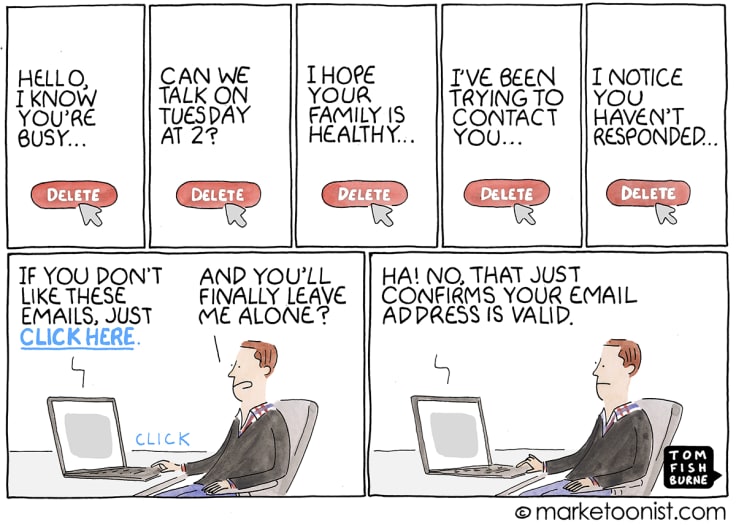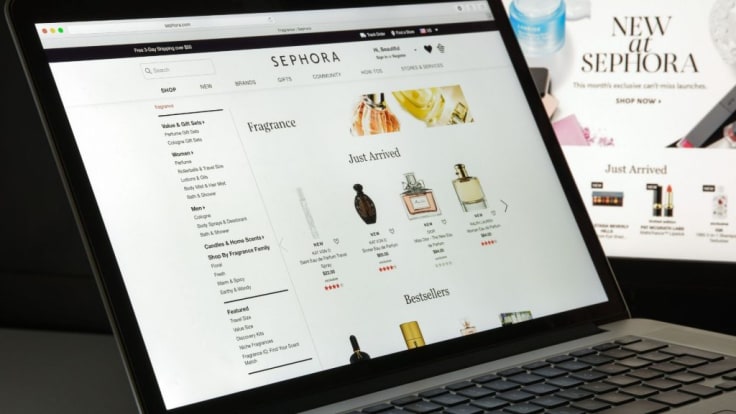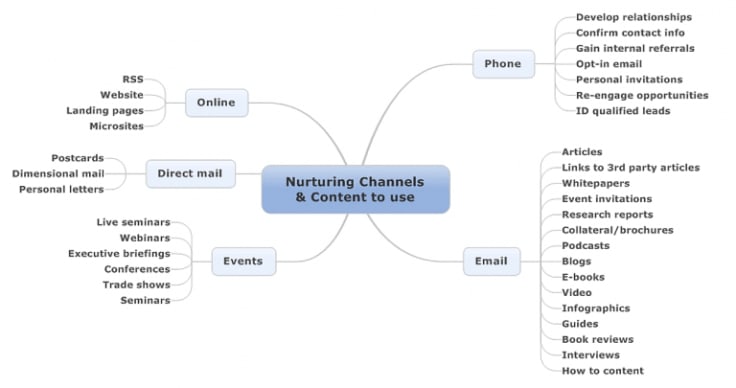Showing top 0 results 0 results found
Showing top 0 results 0 results found

Consumers of today, whether individuals or organizations, are firmly in control of what they want to purchase and no longer want to be simply “sold to” as was the case in earlier days. Today, they research on their own, exploring all options before buying.
This behavioral change has challenged the traditional ways of selling. Much emphasis is, thus, given to building a relationship with the consumer first, rather than shoving the offering in their face. In fact, 73% of leads are not ready to buy from you when you first connect with them.
Nurturing leads is, therefore, essential to business success as these techniques directly impact a consumer’s decision about whether or not they wish to convert into paying customers. But before we delve deeper into that, let us get some basics out of the way:
What is a lead?
The term refers to a person or company interested in what you’re selling.
And what is the definition of lead nurturing?
Simply put, it’s the process of building and reinforcing relationships with prospects and customers at every stage of their buying journeys.
Lead nurturing is rarely about immediate sales. Instead, it’s about enabling real engagement and keeping your business in your target audience’s minds via custom emails, retargeting ads, pop-up forms, direct mail, and so on.

A successful nurturing program focuses marketing efforts on listening to the needs of prospects and providing information they need in order to trust you enough to make a purchase.
Lead nurturing in the digital era
We live in an age where we’re consistently deploying new or modifying legacy technologies to improve business efficiency and bottom line. This concept is called digital transformation, and it demands a major shift in how you do business and provide value to customers.
Digital transformation is all about leveling up your traditional marketing, sales, and operations functionals. It begins and ends with how you think about and engage with your end customers — with the right digital tools on your side.
Speaking specifically of lead nurturing, meeting the evolving market and customer expectations requires experimenting with new technologies and channels.
In this day and age, lead nurturing calls for employing innovative strategies on both offline and online mediums in order to maximize reach for more remarkable results. That’s where going for the omnichannel route can make a stark difference.
What does “omnichannel” mean?
In Latin, “omni” stands for “all.” So, omnichannel means using all channels (offline and online) to deliver one cohesive user experience.
An omnichannel retail strategy, for instance, uses social media, print advertising, and in-store service to attract and engage prospects through the various stages of the sales funnel.
What role does omnichannel have in nurturing leads?
It aims to use as many channels as possible to reach out to prospects and have personalized interactions with them.
For instance, you put together one initiative and goal spread across numerous channels, so your emails link to your landing page, which, in turn, talk to your social media accounts.
The sales team, who eventually speaks to prospects on the phone, knows what’s going on and can relay the same message to the latter.
With an omnichannel lead nurturing strategy, you can lay the groundwork to offer solutions to the target audience’s problems that result in sales and long-term customer relationships.
Would you like more leads?
Benefits of lead nurturing
Before you go down the rabbit hole looking for tips to deploy an omnichannel lead nurturing strategy, it’s helpful to know why your business needs it in the first place. You see, lead nurturing can be complex, and it uses several channels that need to work together.
Businesses that nurture leads enjoy 45% higher ROI and bag 57% larger purchases. It is a genius marketing move that helps them increase their sales in a given period. Here are four fundamental benefits of omnichannel lead nurturing:
1. It helps us respond immediately to the prospect — no time is wasted establishing a relationship; lead nurturing is timely.
2. It’s a targeted approach; no random or unnecessary information is offered to the lead. Instead, we understand the customer and can provide targeted content they would be interested in.
3. Lead nurturing enables you to increase previous customers’ awareness about what more your company offers — as in cross-sell and up-sell. No wonder nurtured leads have a 9% higher average deal size.
4. Although it only manages existing leads, lead nurturing can give rise to new lead generation. Happy customers talk about the good experiences they have with companies, and word-of-mouth or referrals is one of the most efficient ways to generate leads.
Top omnichannel lead nurturing channels
Contrary to popular belief, lead nurturing doesn’t apply to just emails. Many other channels can be put to good use in an omnichannel campaign, including
- Direct mail
- Events and webinars
- Retargeting (Google ads, Facebook ads)
- Social media (LinkedIn, Twitter, Facebook)
- Website content (blogs, landing pages, pop-up forms, CTAs)
- Email marketing (informational content, follow-ups, offer promotion)
Common problems that lead nurturing can solve
Self-directed buyers, shorter attention spans, and multiple decision-makers can be a headache for marketing and sales teams. However, lead nurturing gives you the upper hand in converting leads and building brand loyalty. Here are three problems that omnichannel lead nurturing can solve:
1. Longer sales cycles
Don’t be surprised when we tell you our attention spans have decreased by 33% since 2000. Plus, the competition is fiercer than ever, and it’s possible you might have to jump through many hoops to get approvals from multiple decision-makers involved in the buying process.
Lead nurturing enables salespeople to spend more time resolving lead queries and providing them with information about the product or service. In doing so, they shorten the sales cycle and convert more leads into buyers quickly.
2. Dormant leads in the database
Lead nurturing increases the intent to buy by maintaining relationships with consumers. No lead ever becomes dormant because there’s a periodic exchange of information, which helps keep your business at the forefront of your potential customers’ minds.
3. Lack of sales strategy
A strategic sales strategy wins. Haphazardly cold-calling prospects, sending impersonal follow-up emails, or sharing irrelevant material won’t fetch you any results. When you set up lead nurturing, you have to put goals in place before seeing any impact.
Therefore, determine the number of leads you want to generate, the type of audience you want to attract, and the channels you want to utilize for promotion. Use that information as a jumping-off point to supplement your communications and demonstrate value in your content.
How to nurture leads: Best omnichannel practices
As mentioned previously, your leads may not be in the immediate mood to buy. However, you can gently push them one step closer to closing a deal with you with the right lead nurturing strategies. Below, I’ve listed five best practices for you to follow:
1. Build your lead list
The first step towards kick-starting such a campaign is to identify contacts already in your database and put a lead scoring system in place based on specific parameters, such as the purchasing authority, actions taken by the prospect (filling out a contact form or downloading an eBook), and the possible budget.
For accurate qualification, you must know your ideal buyer persona and compare the available leads against it. The next step is to categorize your leads based on their demographics, preferences, interests, and other relevant factors. This exercise will help you spot those leads that need more nurturing.
2. Create superlative content
Your content team must focus on creating material that your leads will value the most. You could speak to existing customers to understand what they specifically liked, do keyword research to identify the most-searched-for queries or questions, and study insights generated from social media or paid campaigns conducted earlier.
Based on your analysis, you could perhaps host a highly focused niche webinar and invite the leads that are a suitable fit. In addition, harness the power of email marketing and schedule an email sequence campaign for a specific group of leads with a similar pain point.
Given the buying cycle stage, your content has the potential to be far more engaging and relevant than anything else curated by your competitors.
3. Build a positive experience with a chatbot
Research shows that 74% of consumers prefer using chatbots while looking for answers to simple questions. There’s no doubt that they’re an effective marketing automation tool for simple tasks, such as booking an appointment for a demo.

Chatbots should not just be designed for customer support but also for supporting marketing and sales. For instance, a chatbot can segment the target audience based on the data provided. And if a prospect has shared a specific pain point, you can deal with them by offering a solution to that problem via email or phone.
Integrate your bot with CRM and study the data of every prospect (or lead) you have so that you can determine what your next course of action should be. Chatbots can certainly contribute to cultivating relationships with those who visit your website and help you get started with nurturing them.
4. Nurture at both personal and company level
We understand that the concept of B2B selling is restricted to selling to businesses. However, you’re not really selling to businesses. At the end of the day, you deal with people only. For instance, if someone from Company A subscribes to your newsletter, Company A becomes the lead.
And if someone from Company B completes the payment, Company B becomes the lead. It’s, therefore, essential to decide on the context in which you speak to that “someone.” Having said that, your content must demonstrate value for the business but speak to a human being.
Your strategy should include action-oriented and urgent communications and insightful messaging to foster a deeper connection between your goals and stakeholders. Plan ahead to capitalize on dates of interest.
For instance, if you’re dealing with stakeholders in the environment sector, please make sure your communication is based around dates such as Earth Day or Environment Day to initiate a conversation about how your offerings can help and keep your business at the top of their minds.
5. Test and optimize your campaigns
You have to regularly monitor and test your customer nurturing campaigns in order to maintain their health and effectiveness. This will give you insights into aspects of the program such as the types of messages, the platforms used, and tone of voice, which can all be tweaked or optimized.
You can study specific metrics, including click-through rates, sales cycle time, customer lifetime value (CLTV), and conversions using any lead nurturing software.
Examples of omnichannel lead nurturing campaigns
Many popular brands employ omnichannel strategies for enhancing their lead nurturing efforts. Here are the top three examples:
1. Sephora
The popular beauty products seller connects online purchases made by customers to their in-store visits. It enables leads to use the in-store tablets as a virtual “shopping cart” of sorts, allowing them to explore details of products and try them on virtually. In doing this, potential customers are able to add products to their wish list and buy them later online if they like.

2. Oasis
The UK-based fashion retailer fuses its eCommerce site, brick-and-mortar stores, and mobile app into a straightforward shopping experience.
If you happen to walk into one of their stores, you’ll find a sales associate armed with an iPad to help you with on-the-spot, accurate product information. What’s more — the iPad also acts as a cash register.
Plus, if something is unavailable at the store, the associate will instantly place an online order to have it shipped directly to your doorstep.
3. VIP.com
The Chinese B2B eCommerce marketplace helps retailers that sell goods on its platform connect with potential leads. When retailers upload new products on the marketplace, VIP.com uses geolocation technology to send push notifications to potential customers based in the retailer’s area. These leads can visit the store directly or have VIP.com deliver the order for them.
Over to you
Lead nurturing leads to a 20% increase in sales opportunities compared to non-nurtured leads. Yet somehow it often gets overlooked or is not appropriately leveraged by sales and marketing teams. With an omnichannel approach, you can leverage high-value custom content for lead nurturing and thus increase lead volume and quality.
Would you like more leads?




